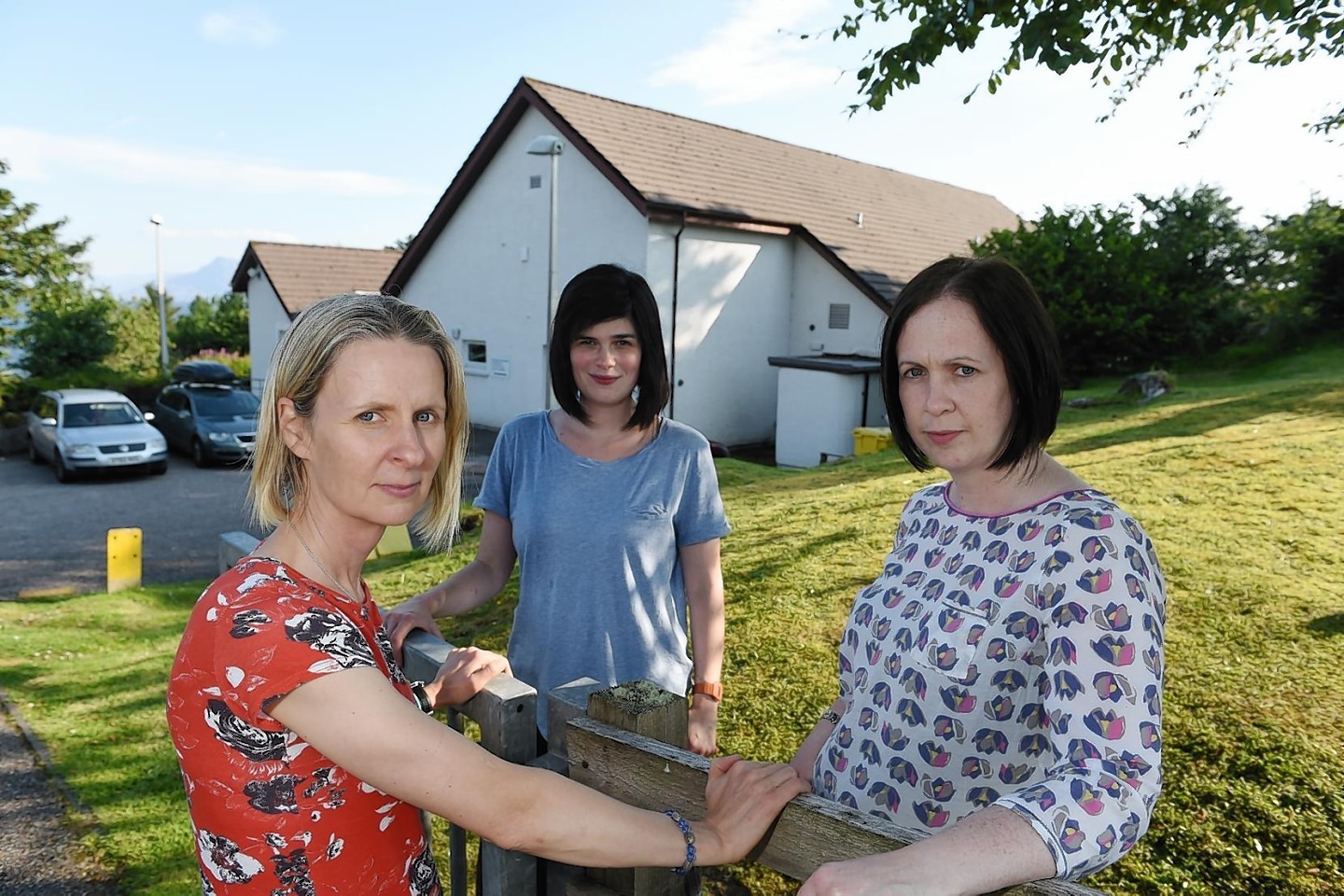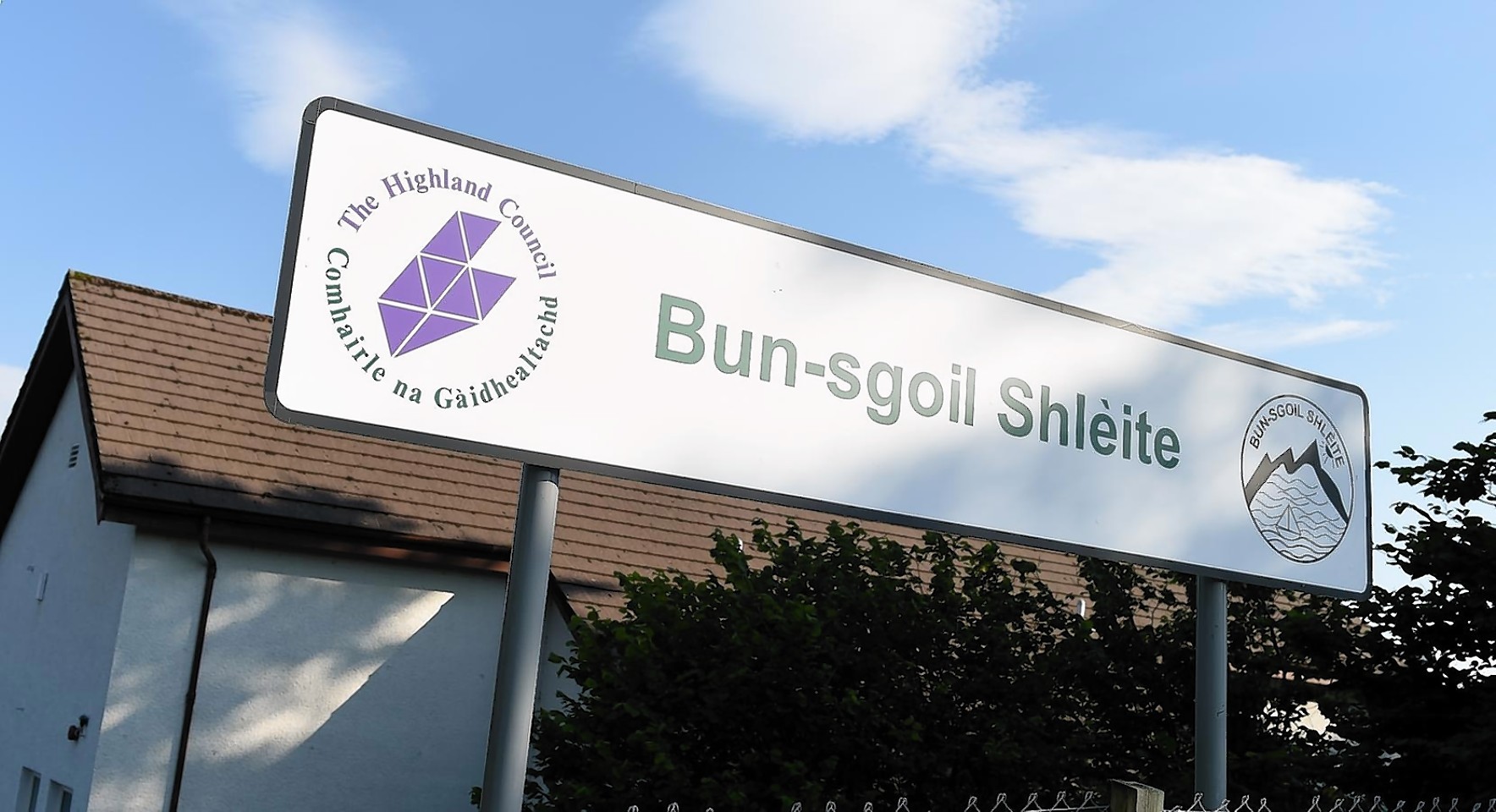Nearly 700 people have signed a petition against Highland Council’s move to cut the number of teachers at Scotland’s first Gaelic school on Skye.
Proposals are in place to cut a teaching post at the 60-pupil Bun-Sgoil Shleite (Sleat) Primary this term.
Campaigners claim that running the school with just two full-time teaching staff will have a “disastrous” effect on the teaching of Gaelic at the country’s pioneering school.
Council chiefs insist they have no choice because of strict Scottish Government imposed rules governing pupil-teacher ratios.
However, parents in Sleat are furious because it will create a composite class of P1 to P4s – and fear the move will impact on their children’s education.
Fiona Hanson, chairwoman of the school’s parent council, said: “The council state that their Gaelic medium education policy is of ‘total immersion’ in the language through the first three years. With the loss of a teacher, that won’t happen.
“Gaelic is Scotland’s language and at risk. It’s important to invest in it, to preserve it.
“We would like to see the council’s ratio reassessed. We’d also like to know exactly where the council’s ring-fenced Gaelic medium education funding is spent if it’s not being spent on getting more teachers.
“Research has shown that children who learn languages at a young age will find it easier to pick up other languages. Research has also shown that children with a second language at this age do better overall.”
Plans to cut the teaching numbers from three to two were prompted by the school roll falling by just three pupils.
The third Gaelic teacher, a probationer, had been providing maternity cover.
Parents argue that a reduction is a short-term measure because pupil numbers are projected to rise.
In their report to councillors, officers warn that ignoring set ratios puts other schools who are seeking additional staff at risk and “could make Gaelic medium provision less viable.”
Skye councillor Hamish Fraser, who is chairman of the authority’s Gaelic implementation group, is disappointed that the cut may have to be made.
He said: “Our hands are tied. We have to abide by the teacher numbers allocated by the government and that applies equally to Gaelic as it does to English.
“We’re very proud of this school which has achieved a lot in the time it’s been going with good leadership being very much part of that success.
“It’s quite important that equal respect for Gaelic and English is something that has been a success. That might be part of the problem that they have, that it is a success, and they have to take the good with the bad because that affects the English classes as well.”
John Macleod, president of An Comunn Gaidhealach, said: “I’m not directly involved, but we need to take a long term view and look a period of years rather thna numbers in one particular year.
“As a I understand bit, the school is likely to have a larger roll next year which would put them above the threshhold, so this seems a short-term solution that the council are applying.
“While I understand it’s difficult for local authorities with the current financial pressures, they should make every effort to ensure that there is strong linguistic support for children both at pre-school and early primary years in order to achieve the fluency and confidence in Gaelic.”

